Top of page
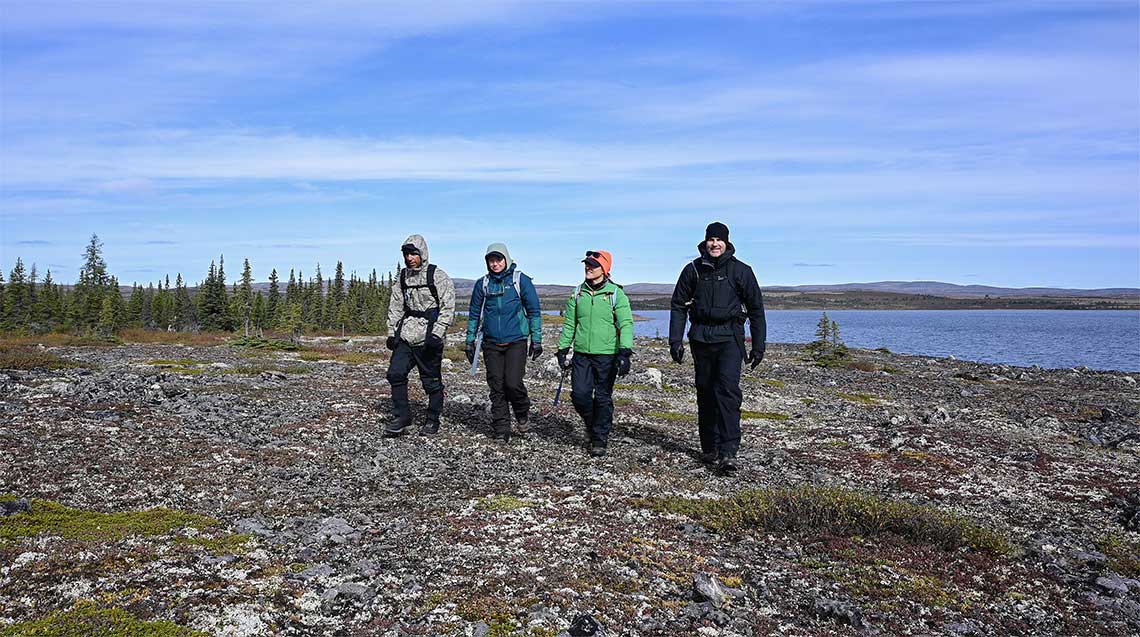
From left: Astronauts Raja Chari (NASA), Jenni Gibbons (CSA), Christina Koch (NASA) and Jeremy Hansen (CSA) during geology field training and research expedition in northern Labrador. (Credit: CSA)
It was back to school as well in the first week of September for Canadian Space Agency (CSA) astronauts Jeremy Hansen and Jenni Gibbons, along with NASA astronauts Christina Koch and Raja Chari. Jeremy and Christina are scheduled to fly on Artemis II, the first crewed mission to the Moon in over 50 years. The group spent most of the week exploring Kamestastin, a remote meteorite impact crater in northern Labrador, near the Quebec border, for planetary science and lunar geology training.

CSA astronauts Jeremy Hansen and Jenni Gibbons listen to Dr. Gordon Osinski, who led this geology field training. (Credit: CSA)
Leading the expedition was Dr. Gordon Osinski, a renowned geologist from Western University’s Institute for Earth and Space Exploration. Dr. Osinski was recently named by NASA as a co-investigator in the geology team for the Artemis III mission, which will be landing on the Moon. In addition to the four astronauts, he was accompanied by NASA spacewalk and science trainers and Western University students.

Dr. Gordon Osinski during a teaching moment where he compared the Tycho lunar crater to the Kamestastin crater. (Credit: CSA)
The Kamestastin crater (also known as Mistastin) lies within the traditional hunting grounds of the Mushuau Innu First Nation and is one of 31 impact craters in Canada. Created some 36 million years ago north of the 55th parallel, and at 28 kilometres in diameter, it is a crucial training ground as we return humans to the Moon, because it is the best representation we have on Earth of what astronauts will find there. The crater contains anorthosite, a rarity on Earth, but abundant on the Moon. Fun fact: The lake was first identified as a possible impact crater in in the Nature science magazine, after being viewed from space.
We would like to sincerely thank the Innu Nation for graciously allowing Jeremy and Jenni, and our colleagues from Western University and NASA, to enter their territory to explore and train students and astronauts at Kamestastin crater. A special thank you to Innu Guardians David Nui, Hank Rich and Sebastian Piwas from Natuashish for guiding the group and sharing their stories and knowledge of Kamestastin and the Innu Nation.
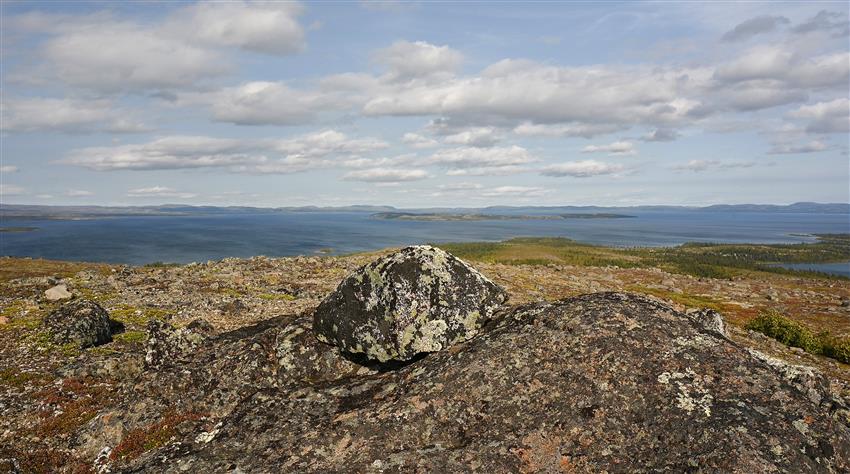
View of Kamestastin Lake. The island seen near the middle is the central uplift of the crater. (Credit: CSA)
What was on their agenda?
Future Moon explorers will be required to choose the best rock samples to bring back with them to maximize the scientific return back on Earth. The group had a very full agenda practising geology in a genuine meteorite impact crater – the closest thing we have to the Moon here on Earth. They worked on:
- Identifying the best instruments and techniques for geological exploits on the lunar surface
- Sampling impact melt and an enigmatic rock known as anorthosite, a rock that is rare on Earth, but covers about 80% of the lunar surface
- Learning impact cratering processes and products in lunar-relevant target rocks
- Practising spacewalking techniques including navigation in lunar geologic scales, traverse building and execution in lunar analogue terrain
- Testing geology tools

CSA astronaut Jeremy Hansen and his Artemis II crewmate, NASA astronaut Christina Koch, sample rocks using rock hammers during a field geology training expedition in northern Labrador. (Credit: CSA)
But why do Jeremy and Christina need to learn all of this even if their mission doesn’t land on the Moon, you might ask? This training not only equips them to decipher lunar geology during Artemis II to prepare them for lunar observations and photography, but also paves the way for upcoming Artemis missions, potentially leading to remarkable lunar exploration.
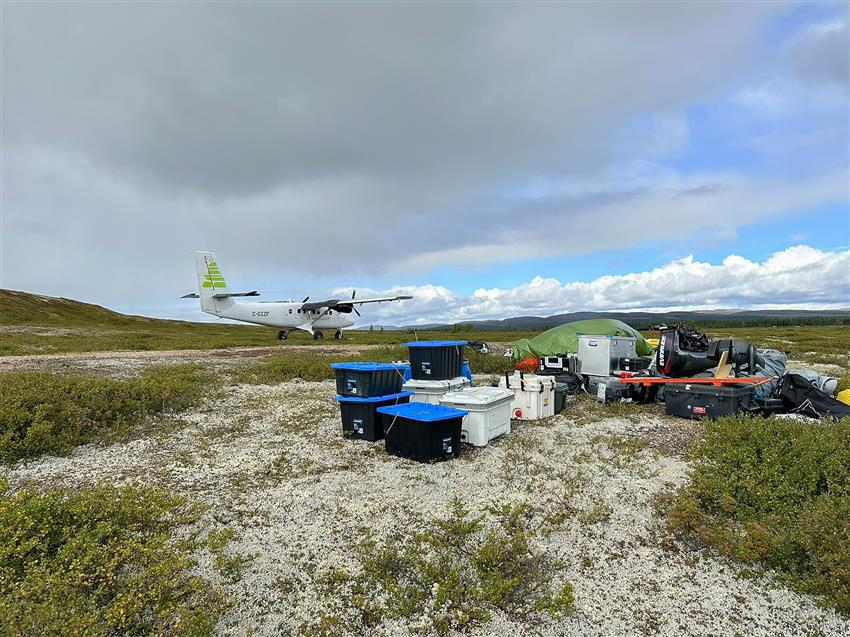
These types of expeditions are similar to space missions in that you need to bring all of your equipment and food with you, with very few or no chance of resupply. Once you are there, you need to be fully independent in case of emergency (except for major injuries) until your plane can pick you up – IF the weather cooperates! (Credit: Gordon Osinski)
They also got to work on various other skills that are transferrable to any space mission, for example:
- Expeditionary skills: logistics and safety, navigation and mapping, mission stressors
- Teambuilding and leadership: team dynamics to accomplish authentic science objectives, group challenges, communication development
Despite the many black flies and mosquitoes (thankfully not an issue in space!) and a challenging environment to live and work in, the group had a tremendous experience learning as we prepare, along our international partners, for future Moon missions.
Continue to scroll for more photos!
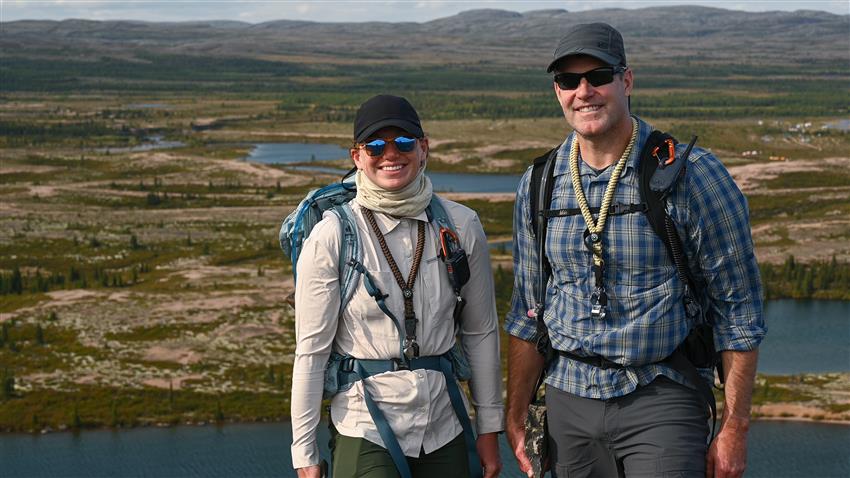
CSA astronauts Jenni Gibbons and Jeremy Hansen are all smiles during a day-long expedition in the Kamestastin crater area. (Credit: CSA)

From left: Astronauts Christina Koch, Jeremy Hansen, Jenni Gibbons and Raja Chari look at impact melt. (Credit: CSA)

The group was treated with views of the northern lights during the first nights of their expedition. (Credit: CSA)
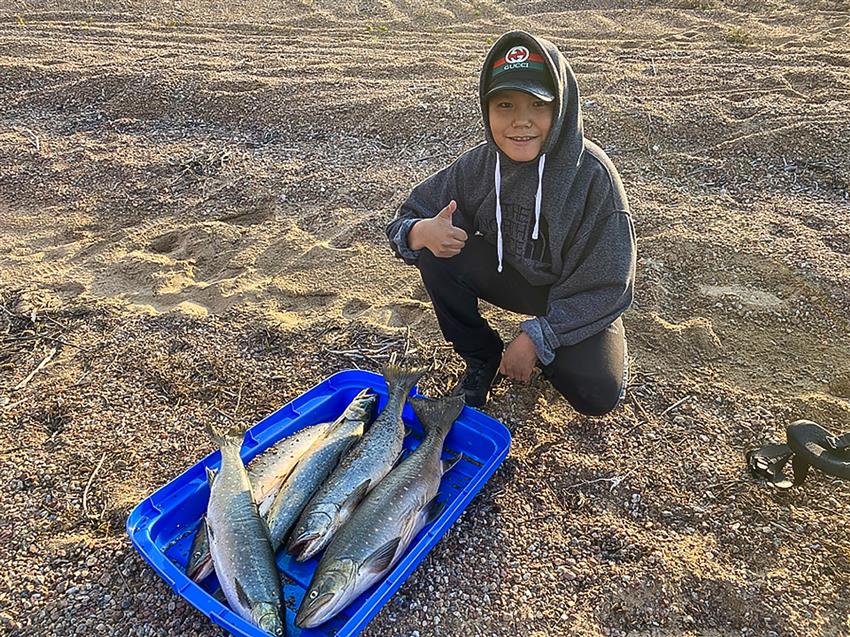
Innu Nation Guardians joined the expedition. With them was young Jacob, who greeted the explorers at camp, after a long day in the field, with this generous gift from his day’s work: enough land-locked Arctic Char to feed the whole group. (Credit: CSA)

Innu Guardian Hank Rich, with Jeremy (left), listens on as Guardian David Nui shares stories of the Innu people around a campfire. (Credit: CSA)
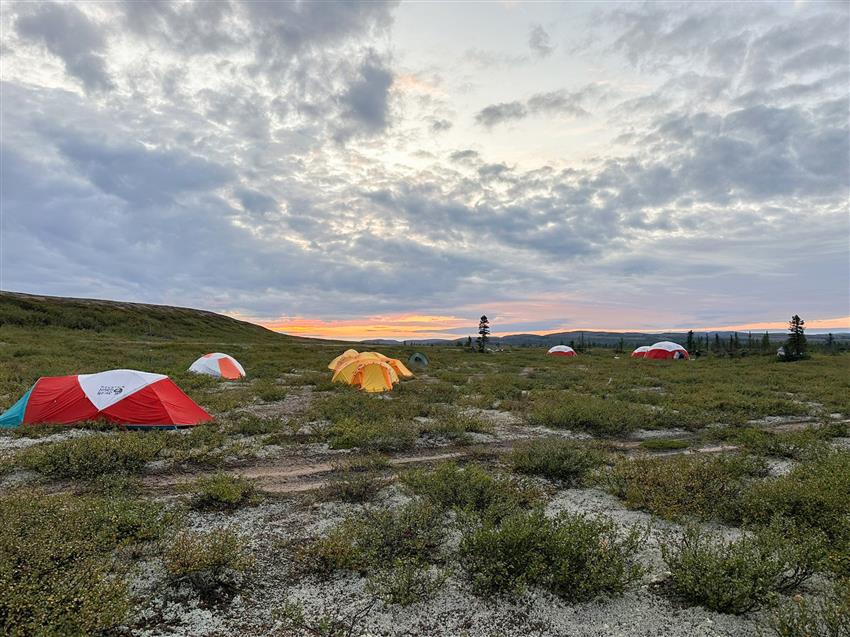
Part of the camp at sunset. (Credit: Gordon Osinski)
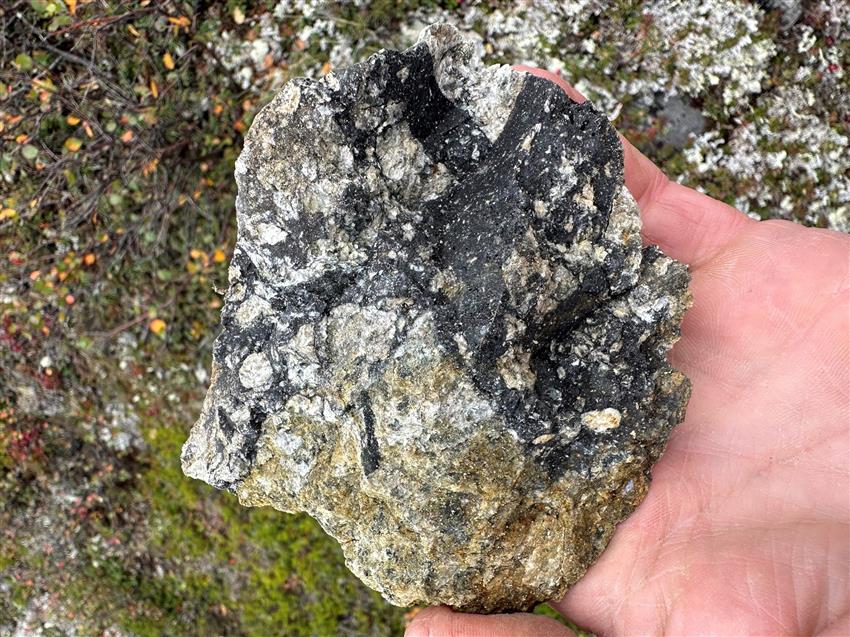
A rock from the central uplift of the Kamestastin crater. The discoveries that were made that day reminded the group of how this crater is such a unique analogue for the Moon. (Credit: Gordon Osinski)
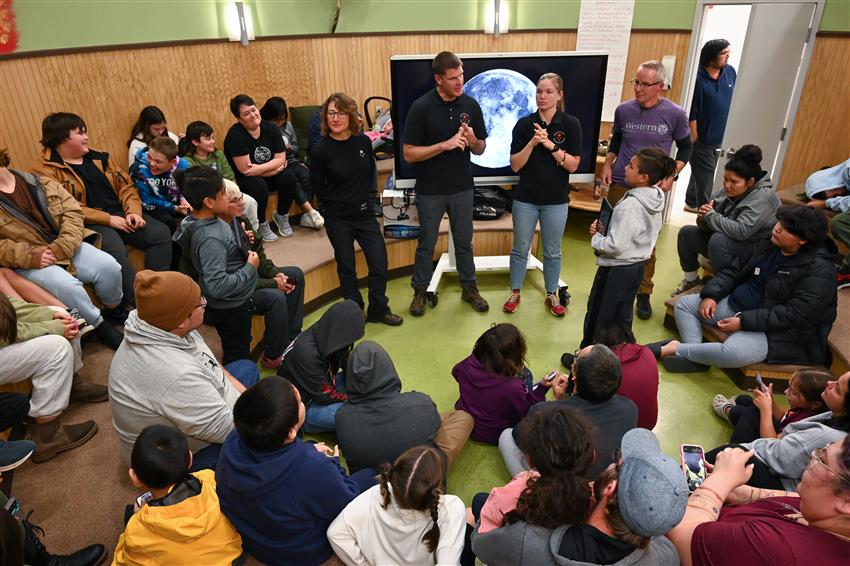
Christina, Jeremy, Jenni and Dr. Osinski met with youth and community members from Sheshatshiu. They talked about their expedition on the Innu territory and the Artemis II mission. (Credit: CSA)

Christina, Jeremy and Jenni share a moment with young Innu students at Mushuau Innu Natuashish School. (Credit: CSA)
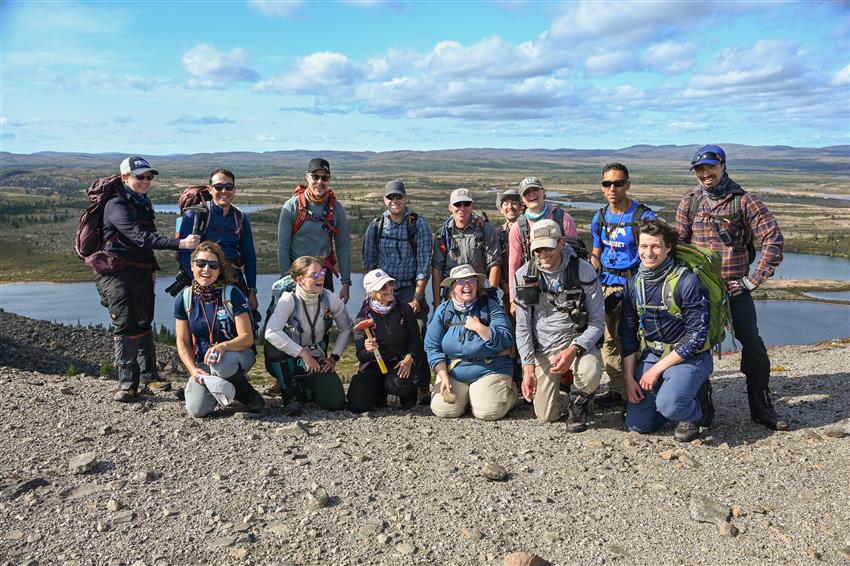
Say “mosquitoes”! The whole team of astronauts, NASA personnel and Western students share a laugh as they prepare to pose for a photo with Dr. Osinski. (Credit: CSA)
Destination Moon vlog
Jeremy takes you along on an expedition for planetary science and lunar geology training in this first part of a vlog. (Credits: Canadian Space Agency, NASA, European Union – Copernicus Program, contains modified Sentinel-2 data processed by Sentinel-Hub, Fulwell 73 UK Limited)
The adventure continues for Canadian Space Agency astronauts Jeremy Hansen and Jenni Gibbons, along with NASA astronauts Christina Koch and Raja Chari in this second vlog on their lunar geology training expedition in Kamestastin. (Credits: Canadian Space Agency, NASA, Fulwell 73 UK Limited)
Explore further
- Date modified: